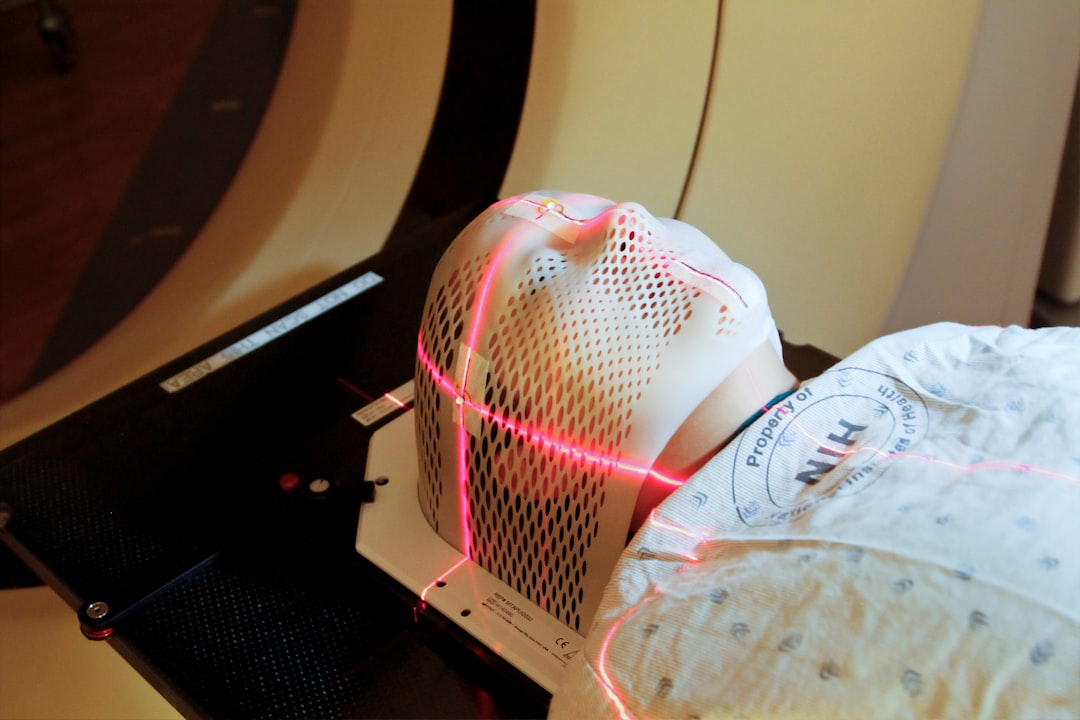Laser hair removal is a popular cosmetic procedure that uses concentrated beams of light to remove unwanted hair. The laser targets the pigment in the hair follicles, heating them up and damaging the follicle to inhibit future hair growth. This process is effective for reducing hair growth in areas such as the legs, underarms, bikini line, face, and more. The procedure is typically performed by a trained professional in a medical spa or dermatologist’s office.
The process of laser hair removal involves several sessions spaced out over a period of time to achieve the best results. The number of sessions required varies depending on the individual’s hair type, skin color, and the area being treated. It’s important to note that laser hair removal is not a permanent solution, but it can significantly reduce hair growth and thickness, leading to long-lasting results.
Key Takeaways
- Laser hair removal uses concentrated light to target and destroy hair follicles, resulting in long-term hair reduction.
- Potential risks and side effects of laser hair removal include skin irritation, redness, swelling, and changes in skin pigmentation.
- Skin reactions and complications from laser hair removal may include blistering, scarring, and infection, especially if not performed by a qualified professional.
- Safety precautions for laser hair removal include avoiding sun exposure, disclosing any medical conditions or medications, and following post-treatment care instructions.
- Long-term effects and risks of laser hair removal may include permanent hair reduction, but also the potential for skin damage and scarring if not performed properly.
- Choosing a qualified professional for laser hair removal is crucial to minimize risks and ensure safe and effective treatment.
- Alternatives to laser hair removal, such as waxing, shaving, and depilatory creams, also carry their own risks including skin irritation, ingrown hairs, and allergic reactions.
Potential Risks and Side Effects of Laser Hair Removal
While laser hair removal is generally considered safe, there are potential risks and side effects that individuals should be aware of before undergoing the procedure. Some common side effects include temporary redness, swelling, and discomfort in the treated area. These side effects typically subside within a few hours to a few days after the treatment. In some cases, individuals may experience changes in skin pigmentation, such as lightening or darkening of the skin, which is usually temporary but can be long-lasting in rare cases.
There is also a risk of burns and blisters if the laser is not used properly or if the individual’s skin is not suitable for the treatment. It’s important for individuals to disclose any medical conditions, medications, or skin sensitivities to their provider before undergoing laser hair removal to minimize the risk of adverse reactions. Additionally, individuals with darker skin tones may be at a higher risk of experiencing pigmentation changes and should seek out a provider with experience in treating diverse skin types.
Skin Reactions and Complications
In some cases, individuals may experience more severe skin reactions and complications from laser hair removal. These can include scarring, crusting, and infection in the treated area. It’s important for individuals to follow their provider’s aftercare instructions carefully to minimize the risk of complications. This may include avoiding sun exposure, using gentle skincare products, and keeping the treated area clean and moisturized.
Individuals with a history of keloid scarring or other skin conditions may not be suitable candidates for laser hair removal, as the procedure can exacerbate these conditions. It’s crucial for individuals to have a thorough consultation with a qualified provider before undergoing laser hair removal to assess their suitability for the treatment and discuss any potential risks or complications based on their medical history and skin type.
Safety Precautions and Considerations for Laser Hair Removal
| Safety Precautions and Considerations for Laser Hair Removal |
|---|
| 1. Ensure the technician is trained and certified in laser hair removal procedures. |
| 2. Discuss any medical conditions, medications, or skin sensitivities with the technician before the procedure. |
| 3. Use appropriate eye protection for both the client and the technician during the treatment. |
| 4. Test a small area of skin before the full treatment to check for any adverse reactions. |
| 5. Avoid sun exposure before and after the treatment to reduce the risk of skin damage. |
| 6. Follow the technician’s aftercare instructions to minimize the risk of complications. |
To ensure the safety and effectiveness of laser hair removal, there are several safety precautions and considerations that individuals should keep in mind. It’s essential to choose a qualified and experienced provider who has received proper training in laser hair removal techniques and understands how to safely treat different skin types and hair colors. Individuals should also inquire about the type of laser being used for the procedure, as certain lasers are more suitable for specific skin types and conditions.
Before undergoing laser hair removal, individuals should avoid sun exposure and tanning beds to reduce the risk of pigmentation changes and burns from the treatment. It’s also important to discontinue any hair removal methods that disturb the hair follicle, such as waxing or plucking, in the weeks leading up to the procedure. Following the provider’s aftercare instructions is crucial for minimizing the risk of complications and achieving optimal results from laser hair removal.
Long-Term Effects and Risks of Laser Hair Removal
While laser hair removal can provide long-lasting results for reducing hair growth, there are potential long-term effects and risks that individuals should be aware of. As mentioned previously, laser hair removal is not a permanent solution, and some individuals may experience regrowth over time. Maintenance sessions may be necessary to sustain the results of laser hair removal.
There is also a risk of long-term pigmentation changes in the treated area, especially for individuals with darker skin tones. It’s important for individuals to discuss their concerns about long-term effects with their provider during the consultation process to gain a better understanding of what to expect from laser hair removal and how to manage any potential long-term risks.
Choosing a Qualified Professional for Laser Hair Removal

Selecting a qualified professional for laser hair removal is crucial for ensuring the safety and effectiveness of the procedure. Individuals should seek out providers who have received proper training and certification in laser hair removal techniques and have experience treating diverse skin types and conditions. It’s important to research potential providers by reading reviews, asking for recommendations, and scheduling consultations to discuss the treatment plan and any concerns.
During the consultation, individuals should inquire about the provider’s experience, the type of laser being used, and any potential risks or complications based on their skin type and medical history. It’s essential for individuals to feel comfortable with their provider and confident in their ability to perform laser hair removal safely and effectively.
Alternatives to Laser Hair Removal and Their Risks
For individuals who are not suitable candidates for laser hair removal or prefer alternative methods, there are several options available for reducing unwanted hair growth. These alternatives include waxing, shaving, depilatory creams, electrolysis, and intense pulsed light (IPL) treatments. Each method has its own set of risks and considerations that individuals should be aware of before making a decision.
Waxing and shaving are temporary solutions for removing unwanted hair but can lead to skin irritation, ingrown hairs, and regrowth over time. Depilatory creams contain harsh chemicals that can cause skin reactions in some individuals. Electrolysis is a method that uses a tiny needle to destroy individual hair follicles and can be effective for permanent hair removal but may be more time-consuming and uncomfortable than laser hair removal.
IPL treatments use broad-spectrum light to target the pigment in the hair follicles and can be effective for reducing hair growth, but individuals should be cautious about potential side effects such as pigmentation changes and burns. It’s important for individuals to research and consult with qualified professionals to determine the most suitable hair removal method based on their individual needs and concerns.
If you’re considering laser hair removal, it’s important to be well-informed about the potential risks and side effects. In a recent review of laser hair removal, the article “How Laser Hair Removal Affects Tattoos” provides valuable insights into the impact of laser hair removal on tattoos. This article discusses the potential risks and precautions to consider if you have tattoos in the treatment area. It’s essential to weigh the benefits against the potential drawbacks before undergoing any cosmetic procedure. For more information on laser hair removal and its effects, check out this comprehensive review.
FAQs
What are the common adverse effects of laser hair removal?
Some common adverse effects of laser hair removal include redness, swelling, and skin irritation at the treatment site. Other potential side effects may include blistering, scarring, changes in skin pigmentation, and even paradoxical hair growth.
Are there any long-term adverse effects of laser hair removal?
Long-term adverse effects of laser hair removal may include changes in skin texture, such as thinning or thickening of the skin, as well as the potential for permanent changes in skin pigmentation.
Who is at risk for experiencing adverse effects from laser hair removal?
Individuals with darker skin tones, as well as those with a history of keloid scarring, may be at a higher risk for experiencing adverse effects from laser hair removal. It is important for individuals to consult with a qualified and experienced practitioner to assess their individual risk factors.
How can adverse effects of laser hair removal be minimized?
To minimize adverse effects of laser hair removal, it is important to ensure that the treatment is performed by a qualified and experienced practitioner using appropriate equipment and settings for the individual’s skin type and hair color. Additionally, following pre- and post-treatment care instructions can help minimize the risk of adverse effects.
What should I do if I experience adverse effects from laser hair removal?
If you experience adverse effects from laser hair removal, it is important to seek medical attention from a qualified healthcare professional. They can provide appropriate treatment and guidance for managing any adverse effects.






